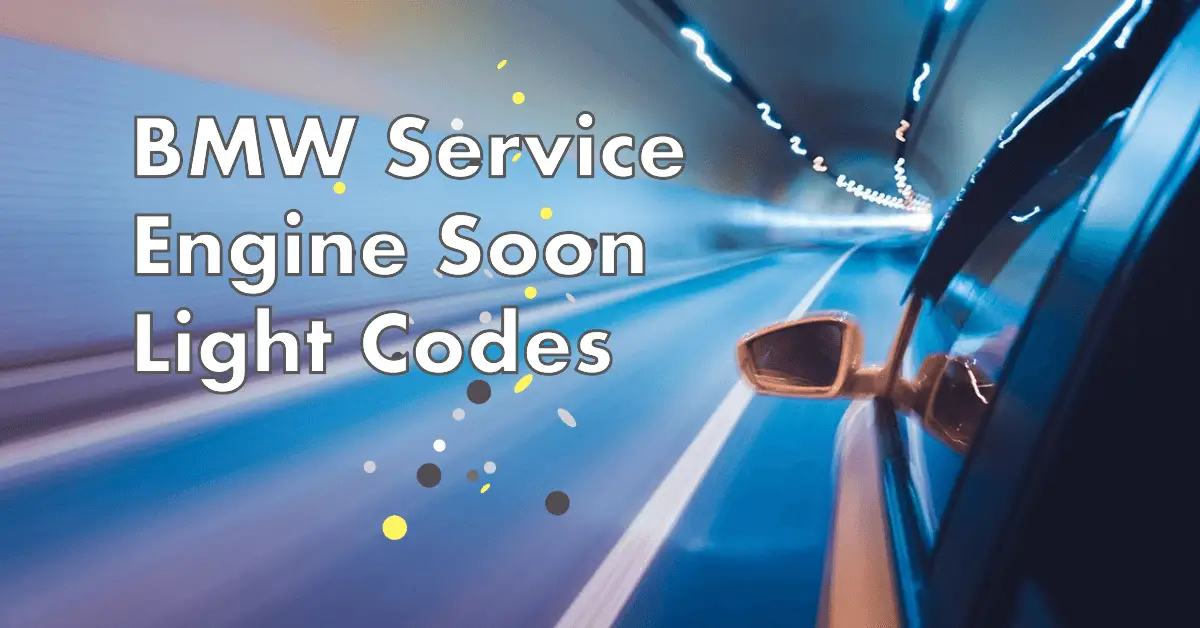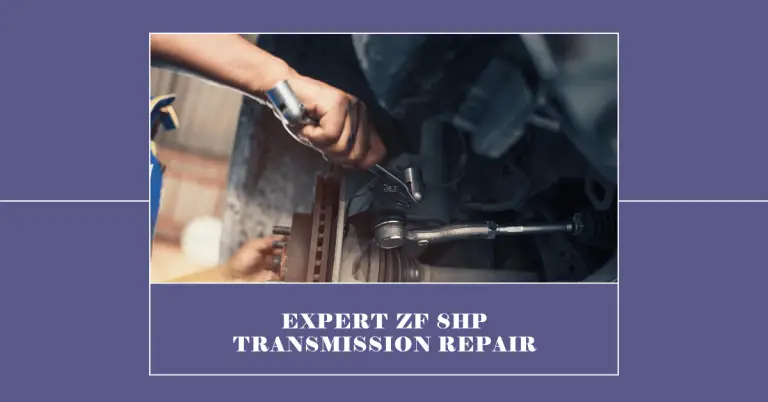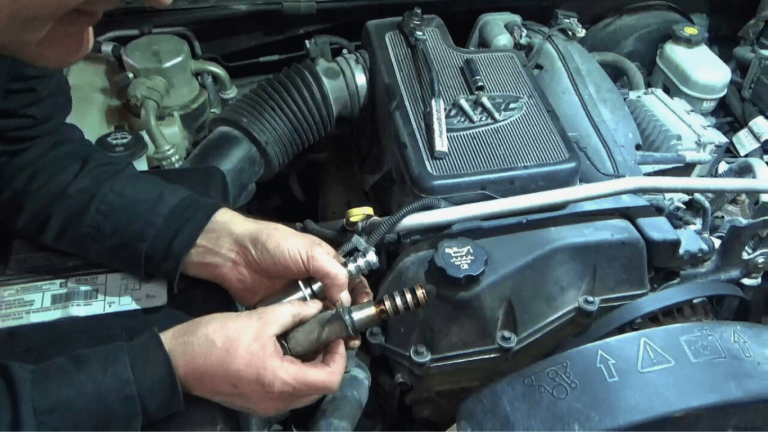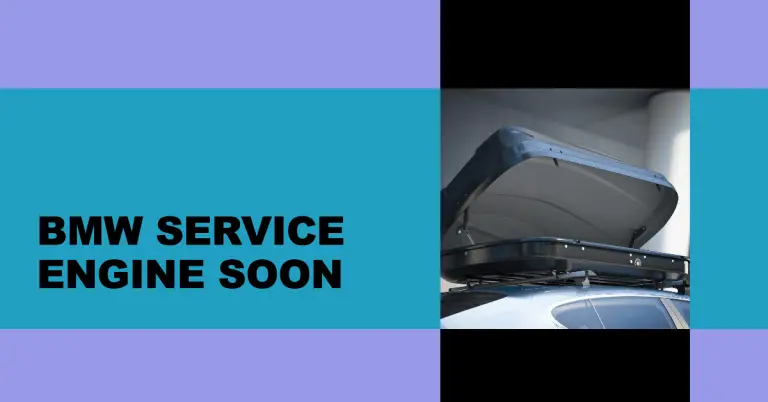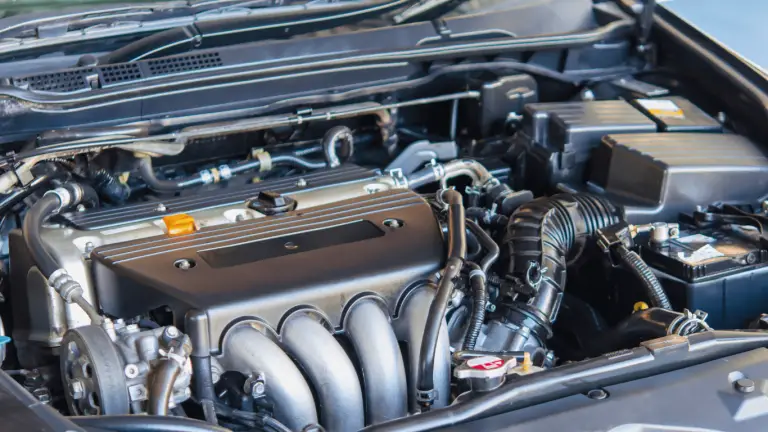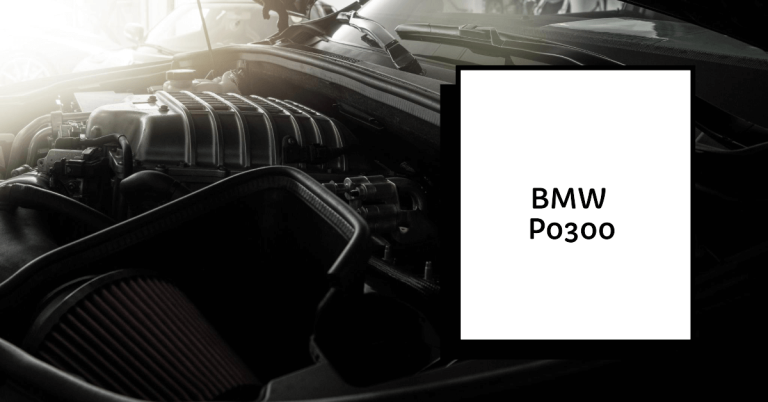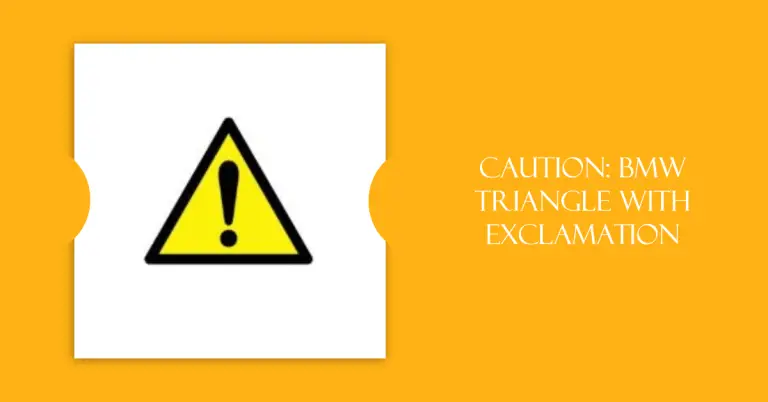BMW Service Engine Soon Light Codes: Causes & How to Reset
Have you ever been driving your BMW when suddenly the “service engine soon” light pops up on your dashboard? It can be an unsettling feeling, especially if your car starts acting differently as the check engine light stays on.
You may be wondering:
What does the BMW service engine soon light mean? Will my car be OK to drive? And what should I do about it?
The service engine light, commonly referred to as the check engine light, indicates that your BMW’s on-board computer (Electronic Control Module) has detected a problem with some component of the engine, emissions system, or transmission.
In most cases, it’s not an emergency – but you should still get the codes read and assessed by a professional BMW technician as soon as possible.
Ignoring the light could lead to more serious problems down the road. In this detailed guide, we’ll over everything you need to know about that cryptic check engine light in your BMW including:
- Common causes of the BMW service engine soon light
- How to diagnose BMW check engine light codes yourself
- Steps for resetting the BMW service engine light
- Frequently asked questions about the check engine light
Gaining a better understanding of why your BMW check engine light is on along with the appropriate steps to take can give you peace of mind about what that light on your dash really means.
What Does the BMW Service Engine Soon Light Mean?
The “service engine soon” light, commonly referred to as the check engine light, first appeared in BMW vehicles in the late 1980s along with the introduction of BMW’s first onboard engine management systems.
These early computerized engine controls were developed to meet vehicle emissions regulations mandated by the U.S. Clean Air Act and California Air Resources Board.
Today, the computerized engine control module (ECM) constantly monitors your BMW’s emissions control systems through an array of sensors positioned throughout the engine, exhaust and drivetrain.
If any sensor detects performance outside of normal parameters, the ECM triggers the check engine light on your dash.
The ECM stores a diagnostic trouble code related to the specific issue which can be accessed by plugging an OBD2 scanner into your BMW’s 16-pin Data Link Connector port usually found under the dash.
While a check engine light is often triggered by a minor issue, it’s still smart to have it assessed and reset properly to avoid larger problems down the road.
Some newer BMW models feature an additional “service engine soon” light that illuminates based on routine maintenance intervals. This light is different than the check engine light – it’s simply a reminder to bring your BMW in for standard servicing like an oil change, brake check or vehicle inspection according to the recommended maintenance schedule.
Common Causes of BMW Service Engine Lights
BMW check engine lights can be triggered by a number of issues ranging from minor to major. Here are some of the most common causes:
1. Loose or Faulty Gas Cap
One of the most common triggers for the check engine light is a loose or faulty gas cap. The cap seals the fuel system and maintains proper pressure.
If it’s loose, fails to seal correctly or the gasket is damaged, it can trigger Check Engine Light Code P0456 – an evaporative emissions system small leak.
The ECM detects improper vacuum buildup and assumes a leak in the EVAP emissions control system. Tightening the gas cap properly or replacing it with a new one can reset the light.
2. EVAP System Leak
P0456 indicates a small leak detected in the EVAP emissions control system which could stem from a loose fuel tank cap, a bad purge valve, cracked hoses, or other component failures.
It prevents fuel vapors from properly venting, triggering the check engine light. Proper diagnosis is key to determine if the issue is a loose gas cap or larger EVAP system leak.
3. Oxygen Sensor Failure
The oxygen sensors measure how much unburnt oxygen is in the exhaust stream to monitor how efficiently fuel is being burned. If an O2 sensor fails or becomes contaminated with soot, it can no longer provide accurate readings to the ECM triggering Check Engine Light Code P0138 (O2 sensor high voltage) or P0131 (O2 sensor low voltage).
Replacing the faulty O2 sensor will turn off the service engine light. Oxygen sensors start to lose their accuracy after 60,000 miles or so.
4. Mass Air Flow Sensor
The mass air flow (MAF) sensor measures the volume and density of air entering the engine allowing the ECM to balance the optimal air/fuel mixture. If it becomes contaminated, the ECM may read higher or lower airflow incorrectly.
A faulty MAF sensor triggers Check Engine Light Code P0102 for low input or P0103 for high input. Replacing the sensor can fix the issue.
5. Spark Plug or Ignition Coil Failure
Faulty spark plugs or ignition coil failure can cause engine misfire detected by the ECM which triggers Code P0300 (random cylinder misfire).
If one specific cylinder shows misfire, it will store a cylinder specific code like P0303 (misfire cylinder 3).
Replacing the spark plug or coil for the misfiring cylinder is needed to turn the light off.
6. Vacuum Leak
The ECM detects a vacuum leak based on unmetered air entering the engine. This can trigger P0171 (system too lean bank 1) or P0174 (system too lean bank 2) check engine codes.
Intake manifold or PCV valve gasket leaks, cracked hoses, or other leaks can introduce extra air and cause the lean condition. Proper diagnosis is needed to locate the vacuum leak.
7. Coolant Temperature Sensor
This sensor measures how hot or cold the engine coolant is to gauge operating temperature. If it fails, the ECM may trigger P0115 (engine coolant temperature sensor circuit).
The coolant temperature sensor can be tested for accuracy and replaced if necessary when this code is stored.
8. Dirty Air Filter
A clogged engine air filter restricts proper airflow into the engine leading to reduced performance. The mass airflow sensor detects the lower readings and may trigger Check Engine Light Code P0101 (mass or volume air flow circuit range/performance problem).
Replacing the dirty air filter with a new one restores proper airflow and turns the light off.
While the check engine light may come on due to those common issues above, there are over 100 different possible fault codes that could trigger it to illuminate.
Without properly diagnosing the code with a scanner, it’s hard to know if the issue is as simple as tightening the gas cap or more complex like replacing the mass airflow sensor.
Having the trouble code assessed by a professional BMW technician is highly recommended to accurately diagnose the cause.
How to Diagnose BMW Check Engine Light Codes?
When your BMW check engine light turns on, the first step is pulling the diagnostic trouble codes (DTCs) to see which sensor or component is triggering it.
Here are a few different methods for retrieving BMW check engine codes:
With An OBD2 Scanner Tool
The most reliable way to read BMW engine fault codes yourself is with an OBD2 scanner diagnostic tool. The tool plugs into your vehicle’s 16-pin Data Link Connector port usually located under the dash.
High quality auto scan tools like those from Innova allow you to not only read & reset engine codes, but also view live data from all the sensors in your BMW. This can help pinpoint the underlying problem.
Follow the menu prompts to pull stored error codes after connecting the scanner. You can then use Google to lookup what each code means or consult a service manual.
BMW Hidden Menu
Many BMW models have a hidden diagnostics menu that can be accessed to check engine codes without a scanner. Look for instructions specific to your BMW model online to access this mode.
For example, on BMW 3-series models: Turn the ignition key to position 1 while holding down the odometer reset button. Then press the button again to cycle through options to engine codes.
Write down the 4-digit codes and research online or in a manual to identify each one. The downside is not getting “pending codes”.
Independent BMW Service Center
The simplest option is to bring your BMW with the check engine light on to a local independent service center.
They can quickly plug into your vehicle’s OBD2 port to read any stored DTCs for free in minutes to point you in the right direction on the cause.
BMW Dealer Diagnostics
You can also take your vehicle to the BMW dealer to have diagnostic trouble codes read and assessed. However, this option tends to be more expensive than visiting an independent shop.
Dealers charge around $150 just for a basic diagnostic scan, not including any repairs that may ultimately be needed. Independent shops often provide this service for free on the spot to garner your future business.
After getting the BMW check engine light codes, look each one up to identify the specific component or system triggering the fault. From there, you’ll know if the problem is as simple as replacing the gas cap or points to more involved repairs like replacing the mass air flow sensor.
How to Reset BMW Service Engine Light?
Once you’ve addressed the underlying problem that triggered the check engine light, you’ll want to reset the light and computer system back to normal operation. Here are a few ways to reset the BMW service engine soon light:
1. With A Scan Tool
The simplest way to reset the check engine light after making repairs is with an OBD2 scanner tool. The scanner will have an option to clear codes and reset monitors which will turn the light off.
This also resets the BMW service computer and emissions monitors back to “ready condition” for inspection or emissions testing.
Follow the tool prompts after plugging into the OBD2 port and the light will turn off instantly. Some tools like BlueDriver also allow you to reset BMW service lights right from your smartphone.
2. Battery Disconnect
With the engine off, disconnect the negative battery cable for 20 minutes before reconnecting. This will reset the BMW computer system along with turning the check engine light off.
Ensure you have radio presets, power seat memory and other settings written down, as those will be reset as well.
3. Manual Reset Procedure
Check your owner’s manual to see if BMW lists a manual procedure for resetting the check engine light without a scanner.
It typically involves turning the ignition key to the on position and pushing pedals like the gas or brake in a set sequence. This can reset basic code errors but monitor status may not reset.
4. Let It Go Off On Its Own
Minor issues can sometimes resolve on their own and turn the service engine light off after a few drive cycles. For example, a loose gas cap triggering an EVAP code may go off after tightening the cap properly and driving for a few days.
However, it’s still best practice to properly diagnose and reset the ECM after repairs to clear codes and reset the system. Letting codes clear passively risks forgetting pending issues.
5. Take It To BMW Service
You can always have your BMW dealer turn the check engine light off after making repairs, but they typically charge around $150 just for a scan and reset. Independent shops offer lower cost scanner resets after diagnosing the code.
Resetting your BMW service engine soon light properly after making repairs has benefits beyond just turning off the warning light. It:
- Clears any stored trouble codes from the ECM computer
- Resets the BMW monitoring systems back to “ready condition” for inspection
- Confirms the underlying problem was fixed correctly
- Helps ensure the fault doesn’t reoccur right away
FAQs about BMW Check Engine Lights
Is it safe to drive with the BMW service engine soon light on?
In most cases, it is safe to drive your BMW with the check engine light illuminated – especially if it’s steady and the vehicle seems to run fine. Flashing or blinking indicates a more serious issue. Schedule an appointment to diagnose the code soon even if driving normally.
Does the BMW check engine light come on at certain mileage intervals?
No, unlike BMW routine maintenance lights, the check engine light is not mileage-based. It is solely activated by emission or drivetrain faults detected by on-board computers. Routine maintenance lights are timed reminders for fluid changes, inspections, etc.
Will the BMW check engine light reset itself?
Sometimes the light will go off on its own if the problem resolves itself over subsequent drive cycles. For example, a loose gas cap could trigger the light then go off after being tightened properly.
However, it’s not recommended to wait and see if it self-corrects. Always have the code properly diagnosed and reset to avoid future issues.
Are BMW check engine lights required by law?
Yes, the check engine light (also called MIL or malfunction indicator lamp) in BMW vehicles is mandated by U.S. regulations through the On-Board Diagnostics generation 2 (OBD2) federal emissions standards.
All 1996+ model year cars sold in the U.S. are required to have the system that monitors emissions-related components for faults and triggers the check engine light if issues are detected.
So in summary, the check engine light in your BMW is not something to ignore. While it may come on due to a minor issue like a loose gas cap, having the trouble code assessed quickly can identify the cause and prevent small problems from becoming large, costly repairs down the road.
Contact German Auto Center for BMW Service Help
At German Auto Center, we’re experts in BMW maintenance, diagnostics and engine light repairs. Our certified BMW technicians use the latest scan tools and diagnostics to read and reset BMW check engine light codes. We take the guesswork out of understanding why your service engine soon light is on.
If you’re located in the greater Los Angeles area, schedule an appointment online for professional diagnosis and repair of your check engine light by BMW specialists. We also offer:
- Routine BMW maintenance to avoid issues
- Guaranteed repairs for as long as you own your BMW
- ASE Master Technicians with advanced BMW training
- Convenient online booking with upfront pricing
Don’t let that check engine light cause ongoing stress every time you drive your Ultimate Driving Machine. Our BMW experts will diagnose the issue accurately and make any needed repairs quickly so you can get back on the road worry-free!
Conclusion
While it’s one of the most dreaded lights drivers experience, the causes for your BMW service engine soon illuminating are relatively straightforward in most cases. Taking proactive steps like reading the codes promptly and making minor repairs can get your BMW back running smoothly and turn the light off for good.

